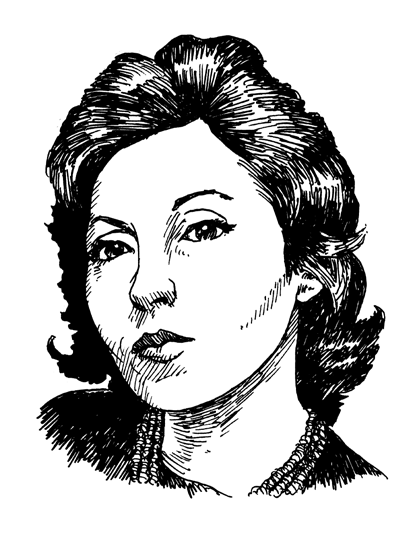I. CLARICE THE MYSTIC
At a reading I gave in Seattle two years ago, a man with white hair told me he had once lived in Brazil and had named his daughter after Clarice Lispector. Later, he handed me a piece of paper on which he’d scrawled “Katrina: I’ve often thought of Clarice as something of a mystic. Thanks.” It was written on a page from Evelyn Underhill’s 1911 book Mysticism: A Study in the Nature and Development of Spiritual Consciousness. Beneath his handwritten note was Underhill’s list of concepts to be treated in CHAPTER 1: THE POINT OF DEPARTURE, from “The mystic type—its persistence—Man’s quest of Truth” to “It claims direct communion with the Absolute.”
Forty years after her death, Clarice, as she is known in Brazil, has become one of those writers whose persona is inextricably intertwined with her books. No longer a mere author, she has taken on the aura of a myth, a goddess, a sphinx, a sorceress, even a kind of internet self-help oracle, with nearly one thousand inspirational aphorisms attributed to her daily on Twitter, fake quotes blending seamlessly with the real. It seems to me that “something of a mystic” is among the best ways to characterize Clarice Lispector.
As I considered Underhill’s descriptors, they did conjure the nature of Clarice’s works, which cut to the “foundations of experience” and bring us to the “logical end of Intellectualism” in a burst of dark laughter or with a simple, unanswerable question. “Religion—Suffering—Beauty—Their mystical aspect” could serve as thematic shorthand for any number of Clarice’s texts, particularly The Passion According to G.H. This fictional account of a profoundly transformative encounter that leads to spiritual awakening recalls personal narratives by sixteenth-century saint Teresa of Ávila and modern-day mystic Simone Weil—except the woman known as G.H. is a 1960s chain-smoking bourgeois dilettante sculptor trapped in the tropical heat of her Copacabana apartment, and the Eucharist that leads her to God is a cockroach.
Like mysticism, Lispector’s work is hard to define. Both are shrouded in a distrust of language’s ability to capture truth. The Greek root of mysticism, μυω, means “to conceal,” while the word mystic derives from mystikos, one initiated into secret religious rites. “It’s a secret,” Clarice would say when she didn’t want to answer an interview question. Reading her for the first time can feel like being led down a passage toward esoteric mysteries that will never be completely illuminated. I imagine Clarice’s most devoted readers practicing a form of bibliomancy, opening her books at random to let one of her arresting lines set them at a new angle to life, like a tarot...
You have reached your article limit
Sign up for a digital subscription and continue reading all new issues, plus our entire archives, for just $1.50/month.
Already a subscriber? Sign in





